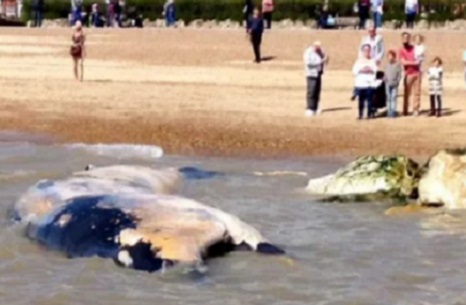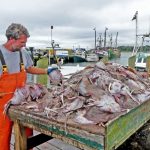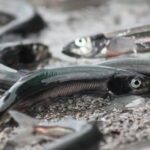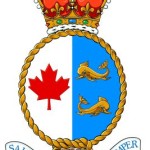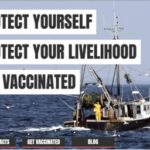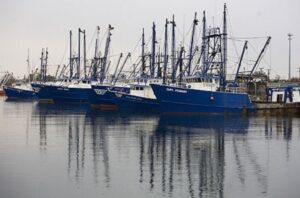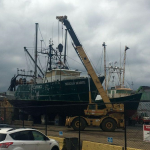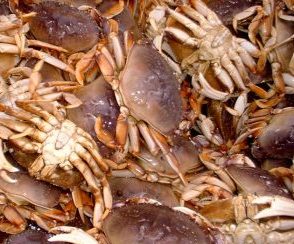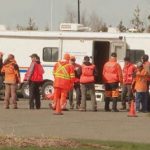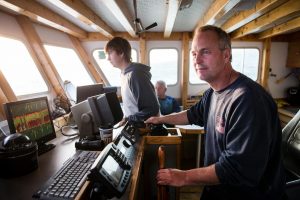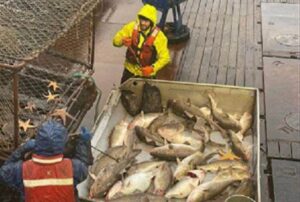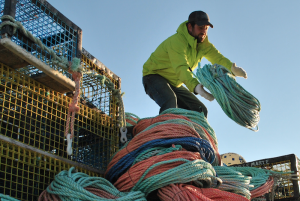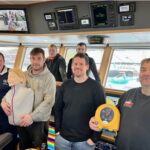Search Results for: CETA
NOAA/NMFS Ignores Dangerous Sound Levels from Pile Driving – By Jim Lovgren
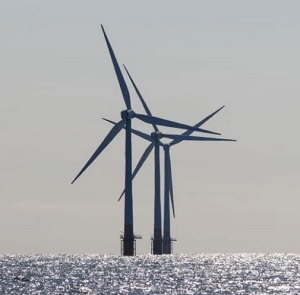 A new recently released report from Rand Acoustics, LLC scientifically documented that the stated sound levels created by the pile driving of wind turbine stanchions into the seafloor is much louder than the NOAA approved levels. In a study dated November 2, 2023, the researchers used acoustic listening devises to record the underwater sounds being created from piledriving by the crane ship “Orion” in the Vineyard wind BOEM lease area OCS-A 0501 southwest of Nantucket Island. Prior to this research, Rand Acoustics documented the underwater sound levels being produced by some of the research vessels using sonar and seismic devises to examine and document the seafloor prior to turbine construction. This research proved that the sound levels produced by these research vessels exceeded the stated sound levels approved by NOAA/NMFS to protect marine mammals and resulted in the documentary film “Thrown to the wind”.
A new recently released report from Rand Acoustics, LLC scientifically documented that the stated sound levels created by the pile driving of wind turbine stanchions into the seafloor is much louder than the NOAA approved levels. In a study dated November 2, 2023, the researchers used acoustic listening devises to record the underwater sounds being created from piledriving by the crane ship “Orion” in the Vineyard wind BOEM lease area OCS-A 0501 southwest of Nantucket Island. Prior to this research, Rand Acoustics documented the underwater sound levels being produced by some of the research vessels using sonar and seismic devises to examine and document the seafloor prior to turbine construction. This research proved that the sound levels produced by these research vessels exceeded the stated sound levels approved by NOAA/NMFS to protect marine mammals and resulted in the documentary film “Thrown to the wind”.
From December 2022 to the present day, there have been over one hundred dead Whales of various species discovered either washed up on east coast beaches or floating offshore, including at least six critically endangered Northern Right Whales. An even larger number of Dolphins have also died mysteriously during this time frame which NMFS calls an UME [unexplained mortality event]. These abnormally high numbers of dead marine mammals have one thing in common, they die while offshore wind research vessels were blasting away nearby, or piledriving was taking place. This coincidence of dead marine animals washing ashore while Wind vessels were working nearby has been collaborated by using AIS marine tracking data of those vessels and the location of the dead marine mammals. While a paper has not yet been published, those results are known, and the study continues as the slaughter shows no signs of abatement. The killing isn’t just limited to Whales and Dolphins, it is all inclusive, Sharks, Sturgeons, Crabs, Clams, Turtles, and more have washed up dead at an alarming rate. But not alarming enough to concern the people in charge at NOAA/NMFS.
NOAA and BOEM are the two agencies’ responsible for issuing Incidental take permits to entities that may negatively impact upon a marine mammal’s health and environment. For many years the commercial fishing industry has been granted incidental take permits under strict rules of obedience, with many measures developed to reduce mortality. This has cost the fishing industry millions of dollars of lost revenue, but it has been beneficial in reducing gear entanglements and other sources of mortality to the threatened and endangered species they are designed to protect. Noncompliance of the regulations can result in catastrophic fines that can bankrupt the offender. NOAA/NMFS has been protecting marine mammals for decades from avoidable mortality by the fishing industry but stand by helplessly when Big Bad BOEM [BBB] allows unthinkable numbers of marine mammals to be harassed and killed by their patrons in the oil/wind industry. Over a decade ago BBB proposed allowing the level B harassment of over 13.5 million Whales and Dolphins over an eight-year period. That included an allowed 138,000 level A takes, [which is death] including 10 Northern Right Whales. Not surprisingly they met with strong opposition from virtually every environmental group in existence, and the proposal was dead on arrival. Now 10 years later those same research vessels have been giving the green light to do the exact same research that was turned down years earlier. The only difference is that the original proposal was for oil exploration, while the ongoing research is for wind turbines. Interestingly, most of the environmental groups that opposed the original BOEM oil exploration and its devastating consequences, are standing on the sidelines watching as what they once vehemently opposed, is now taking place, just under a different pretext.
These are some of the results from the newest Rand Acoustics LLC study that was conducted, titled, Technical Report: Pile driving Noise Survey, November 2, 2023. From the report, “The pile driving operations included double bubble curtains and hydro damper net for noise controls” These are two different noise mitigation techniques that are ineffective at anything except placating the public to believe that the noise being emitted is being reduced to harmless levels. “Nonetheless, the survey results find pile driving impulsive sound levels are similar to seismic air gun arrays and raise concerns about heightened adverse noise impacts on marine mammals”. The noise level of piledriving equaling that of air gun arrays is not a surprise, the fact that these high levels are reached despite the “best” efforts of Bubble curtains, and hydro damper net to reduce the noise, prove that those mitigation techniques are ineffective at best.
“The standard 90-percent RMS metric utilized by the NMFS underestimates the sound level experienced by cetaceans by as much as 6 dB, potentially cutting the protective distances in half and reducing marine mammal safeguarding zones by up to 75%”. This is a highly technical document, and very detailed in its exploration of the facts, but what was found in this report along with the prior report on sonar research, is that NMFS has consistently underestimated the noise level being produced by offshore wind operations.
“The continuous noise generated by vessel propulsion and dynamic positioning thrusters significantly surpassed the federal threshold for behavioral harassment, with noise levels exceeding 120 dB out to over 6 kilometers. Given federal agencies concerns over the compound effects of continuous and impulse noise, this frequently overlooked issue in regulatory assessments constitutes a definitive risk of behavioral harassment to marine mammals, underscoring the need to reevaluate “current
protective measures”. Surprise, just the operational noise of the piledriving vessel [not including the actual piledriving] is loud enough to constitute a behavioral response from marine mammals. This operational noise, although low compared to the effects of sonar, seismic, and piledriving, is a constant disruptive sound that is produced 24 hours a day for as long as the vessel is on site.
“NMFS anticipates that impacts to marine mammals would be in the form of behavioral harassment and no take by injury, serious injury, or mortality is proposed. The basis for the take estimate is the number of marine mammals that would be exposed to sound levels in excess of NMFS level B harassment criteria for impulsive noise [160dB re 1 uPa] and continuous noise [120 dB re 1 uPa rms]]”.
In conclusion; “This investigation discovered a substantial underestimation of both impulsive and continuous noise levels by current regulatory standards, suggesting that the actual exposure to harmful noise levels from piledriving for marine mammals like the critically endangered North Atlantic Right Whale is substantially greater than NMFS acknowledges in its existing protective measures. This indicates an urgent need to review and possibly revise NMFS monitoring protocols and mitigation.
strategies for pile driving to ensure adequate protection for marine mammals against both impulse and continuous underwater noise pollution. The findings detailed in this report underscore the need for immediate action due to the substantial underestimations uncovered by this independent investigation”.
These two studies by Rand Acoustics LLC. raise many questions. Top among them is why isn’t NOAA/NMFS aware of the underestimations of the noise produced by piledriving, sonar/seismic exploration, and even the excessive noise produced by the crane vessel during operations? There is supposed to be acoustic monitoring of these vessels during their operations, this is part of the mitigation protocols, is it being done? If so, where is the information? In regard to acoustic monitoring, there is an extensive network of listening devises operated throughout the Atlantic seaboard by the military, NOAA/NMFS and scientific institutions, what are they recording and is this being hidden from the public? This is important because low frequency noise can travel hundreds of miles underwater, meaning that a sound produced off of Nantucket may be heard off of Virginia. When you consider the amount of newly introduced noise into the environment in the last two years, from dozens of wind
related entities, its hard to imagine that the cumulative effects of such a multitude of noise sources would have no effect on marine mammals.
Is NOAA/NMFS going to review these findings, and using the new higher levels of sound documented, run new models to see if the actual sounds produced would result in a change from level B harassment to level A harassment? It’s pretty clear that something is killing the marine mammals on the east coast, and the only thing that is certain according to NMFS is that the deaths are not related to offshore wind activity. The results from the Rand investigations should change their minds.
Month-long closure paralyses Lorient fleet
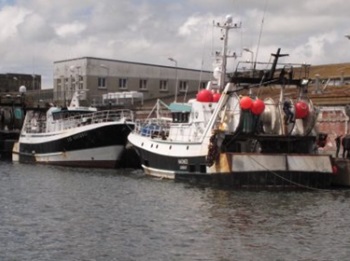 Following the decision by the French Council of State to order a closure of fishing grounds in the Bay of Biscay to protect cetaceans, more than half of the Lorient fleet expects to remain tied up until the end of February. The closure applies to around 450 gillnetters, pelagic trawlers and other fishing vessels from 22nd January to 20th February, throughout the Bay of Biscay, as well as applying to fishing vessels operating under other flags. The measure is affecting around forty of the Lorient Keroman fleet, and the effects go down the chain to hit the port’s seafood trade. more, >>click to read<< 20:27
Following the decision by the French Council of State to order a closure of fishing grounds in the Bay of Biscay to protect cetaceans, more than half of the Lorient fleet expects to remain tied up until the end of February. The closure applies to around 450 gillnetters, pelagic trawlers and other fishing vessels from 22nd January to 20th February, throughout the Bay of Biscay, as well as applying to fishing vessels operating under other flags. The measure is affecting around forty of the Lorient Keroman fleet, and the effects go down the chain to hit the port’s seafood trade. more, >>click to read<< 20:27
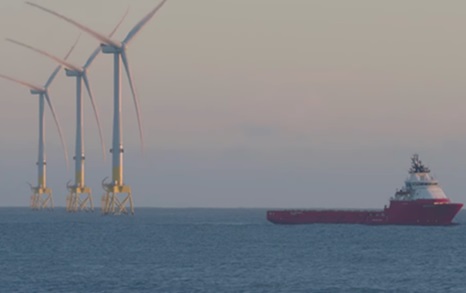
Ringside View: Offshore Wind is a Financial and Environmental Catastrophe
It’s about time Californians of all ideological persuasions wake up and stop what is possibly the most economically wasteful and environmentally destructive project in American history: the utility scale adoption of offshore wind energy. The California Legislature intends to despoil our coastline and coastal waters with floating wind turbines, 20+ miles offshore, tethered to the sea floor 4,000 feet beneath the waves. Along with tethering cables, high voltage wires will descend from each of these noisy, 1,000 foot tall leviathans, but we’re to assume none of this will disrupt the migrations of our treasured Cetaceans and other marine and avian life, not the electric fields emanating from hundreds (thousands?) of 20+ mile long live power lines laid onto the ocean floor, nor from the construction, the maintenance, or the new ports, ships, and submersibles. >>click to reafd<< 10:57
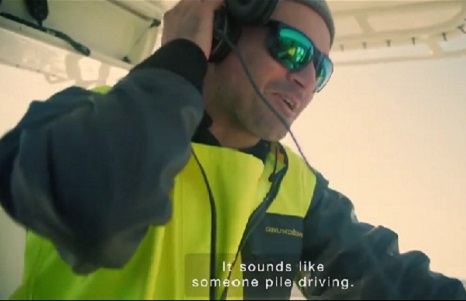
New documentary ‘proves’ building offshore wind farms does kills whales
The increase in whale, dolphin, and other cetacean deaths off the East Coast of the United States since 2016 is not due to the construction of large industrial wind turbines, U.S. government officials say. Their scientists have done the research, they say, to prove that whatever is killing the whales is completely unrelated to the wind industry. But now, a new documentary, “Thrown to the Wind,” by director and producer Jonah Markowitz, which I executive produced, proves that the US government officials have been lying. The film documents surprisingly loud, high-decibel sonar emitted by wind industry vessels when measured with state-of-the-art hydrophones. Video, >click to read<
Nils Stolpe: It’s not the fault of the wind industry??? Sophistry is the use of fallacious arguments, especially with the intention of deceiving.
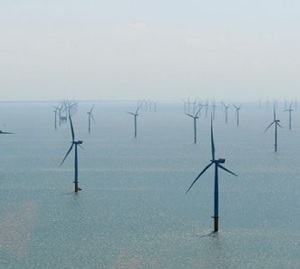 The “We’re for ocean wind power, the Hell with the rest of the oceans” claque have been yammering their “it’s not the fault of the wind industry” chant ever since an unprecedented number of dead or dying whales and dolphins started washing up on New York and New Jersey beaches. Since December of this past year, when each of these incidents (was?) turned into a media event, it has been inevitably accompanied by some government (from Washington or Trenton) official, some (oddly enough, almost assuredly Democratic) legislator, some presumed objective scientist (doing an on-camera or recorded interview) with his or her hand held out for her or his share of what are very likely going to be billions of state, federal or wind industry research dollars, or some so-called environmentalist with the same goal. Just about all of them are insistently proclaiming “there is no proof that sonar testing (or any other testing being done by/for the wind industry) kills whales and/or dolphins.”
The “We’re for ocean wind power, the Hell with the rest of the oceans” claque have been yammering their “it’s not the fault of the wind industry” chant ever since an unprecedented number of dead or dying whales and dolphins started washing up on New York and New Jersey beaches. Since December of this past year, when each of these incidents (was?) turned into a media event, it has been inevitably accompanied by some government (from Washington or Trenton) official, some (oddly enough, almost assuredly Democratic) legislator, some presumed objective scientist (doing an on-camera or recorded interview) with his or her hand held out for her or his share of what are very likely going to be billions of state, federal or wind industry research dollars, or some so-called environmentalist with the same goal. Just about all of them are insistently proclaiming “there is no proof that sonar testing (or any other testing being done by/for the wind industry) kills whales and/or dolphins.”
This is sophistry, and it is sophistry being fueled by a false equivalency-that no proof that the testing in question harms/kills whales/dolphins is equivalent to there being proof that the testing in question does not injure/kill whales/dolphins. This is reducing sophistry to its most elementary, its most transparent, and its most pathetic level. Whenever an employee of the National Oceanographic and Atmospheric Administration (NOAA), the Bureau of Ocean Energy Management (BOEM), the New Jersey Department of Environmental Protection (NJDEP), the New Jersey Board of Public Utilities (NJBPU), President Joe Biden, NJ Governor Phil Murphy, or any of the organizations or corporations looking forward to turning our oceans into the seaborne equivalent of industrialized northern New Jersey, wants you to believe that “there is proof that sonar testing (or any other testing carried out in the campaign to industrialize our mostly pristine ocean) doesn’t kill whales and/or dolphins.” There isn’t any such proof, and if they had the strength of any convictions at all, they would be up front about it. But unfortunately, when it comes to elected officials, the convictions they seem to be focused on involve questionable campaign contributions or financial transactions, not accuracy in their pronouncements.
Had any of the functionaries who have been so intent on befuddling the public on this issue ever been exposed to an Introduction to Philosophy course (and gotten anything out of it other than a grade), perhaps they would realize this. But then again, perhaps not. Perhaps they also realize this themselves but think (or hope) you won’t. Or perhaps they realize that their future promotions and eventual retirement depend on not embarrassing the President or the Governor by contradicting either one. I was there in a prior existence, and I can definitely vouch for that one.
This is such a fundamental fact in dealing with the dead or dying whales and dolphins that I’m compelled to repeat it: There is no proof that sonar testing or related activities doesn’t kill whales or dolphins.
Without a major public outcry, what’s going to be a burgeoning wind-power industry’s virtually instantaneous creation-without the level of objective environmental, social and economic oversight that such a huge undertaking demands (or should demand)-might well cost us far more than most of us are willing to pay. And we’re not going to know until it’s too late.
The only logical response to the pro wind forces’ contention that “there’s no proof that prep work for offshore wind power is responsible for whales or dolphins dying.” has to be so what? Do the research, identify the potential problems, and then if the costs are worth it, get started. But don’t allow the wind development people to use the “public panic” that has been building for most of a decade to ignore federal, state, and local legislative and regulatory requirements that have evolved for most of a century in their race for the gold ring that taxpayers and ratepayers are going to be paying for.
Lauren Gaches, a spokesperson for the National Oceanic and Atmospheric Administration, said there is no evidence “to support speculation” that noise resulting from offshore wind site work is killing whales, adding the agency will continue to study the matter.
To get an idea of what coastal residents, recreational and commercial fishermen, boaters, commercial vessel operators, folks who like the oceans just the way they are, and all of those whales and dolphins are up against, do a web search on “whales evidence wind energy -orcas.” (the “-orcas” is to avoid the recent spate of media attention focused on a handful of orcas which have assaulted a smaller handful of sailing vessels in the Mediterranean). Many of the millions of hits will involve a relatively small number of purported facts, most of them echoing what NOAA laid out in the above quote. Coincidental? Not hardly! All resulting from a whole bunch of reporters doing an awful lot of independent research (yea, right! That’ll be the day!), or an awful lot of hand-holding and very purposeful “misdirection” by a bunch of bureaucrats who, considering the degree of public commitment by the President of the United States and the Governor of New Jersey, aren’t going to do, say or write (or probably even think) anything which isn’t toeing the federal line, ‘cause that isn’t going to get anyone ahead in either the federal or the state bureaucracy. Or get you on the imminent grant gravy train from the feds or from the prospective wind energy mega-moguls.
Some individuals and some organizations-more’s the pity-are trying to preserve their own little slice of the ocean pie regardless of any potential threats to the ocean environment and the critters-not just the whales and dolphins-in it. A far smaller number aren’t and are actively but individually campaigning against it.
Considering the knots that the anti-fishing environmental organizations have tied the domestic commercial fishing industry into (with the apparent tacit approval of NMFS/NOAA in many cases) over the last three or so decades, a bunch of individual uncoordinated efforts are probably not going to work out all that well. Reaching out to other groups and individuals who are as equally against turning our oceans into the oceanic equivalent of New Jersey’s Bayway Refinery in NJ might be a more effective option. But whatever you do, don’t sit on your hands, doing nothing while watching it all happen. Our oceans, our whales and dolphins, our inshore and offshore ecosystems and all of the critters they support are much too valuable -maybe even to the pols and the big wind developers-and the last thing that we should do is willingly let it happen. So get involved, get organized and remember that there’s no good reason to turn the Jersey Shore into an extension of the wall-to-wall industrial development in North Jersey. More environmentally acceptable sources of electricity are available today, and more are on the way.
One more question –
Much has been made about the relationship between increased international shipping in the Port of NY and NJ, ocean warming/climate change, vessel strikes and fishing gear interactions and abnormal (in spite of what NOAA/NMFS says) whale/dolphin mortalities. Not much has been made, however, of the fact that over the last several months the whale/dolphin mortalities appear to have dropped to somewhere around their “normal” level. Commercial fishing landings (and by projection commercial fishing pressure and commercial fishing activities) haven’t changed significantly. Reports are that commercial shipping traffic has not varied since the beginning of the covid crisis, and the weather/climate hasn’t changed noticeably. If BOEM and NOAA/NMFS are anywhere near accurate in their guesses about the causes of the abnormal number of cetacean deaths, why has the number of dead whales and dolphins dropped precipitously in the last two months? About the only remaining factors that could be a significant cause of mortality are seismic testing and/or related big wind activities. Would it surprise anyone to learn that the testing boats with their lucrative contracts with Big Wind, or some enterprising public officials, or some unscrupulous politician, or some on-board “experts,” might exert adequate pressure to insure that whale/dolphin mortality due to seismic testing be put on hold, via putting the testing itself on hold, until the media heat, which was reaching a crescendo just before the whales and dolphins apparently gained their new lease on life, moved on to the next cause célèbre? Or could the testing sites temporarily shift to areas that the whales and dolphins avoid, or did the on-board observers finally figure out how to do their jobs.
I’m not saying any of these factors are to blame, but until we know what is responsible, we’re not going to know how or if it can be controlled. To continue full-bore ahead with the wind power development off our coast without knowing that is at best irresponsibility, at worst it’s negligence (and perhaps illegal).
______________________________
And finally, we have some possible light at the end of the “1,000 feet tall (measured from the sea surface) threats to our oceans ecosystem” saga from the intro to OFFSHORE WINDMILLS WILL COST CAPE MAY, NJ, $1B IN TOURISM REVENUE from the NJ101.5 website at https://tinyurl.com/3rub8ctm:
– Eric Scott
May 26, 2023
Cape May County Commissioners have unanimously passed a resolution opposed to offshore wind projects and vow to continue to fight the installation of wind mills off the coast.
A report supporting the resolution claims the windmills will cost Cape May County more than $1.1 billion in lost tourism revenue and will have a devastating impact on food service, hospitality, retail, rental housing and other segments of the local economy.
Wind developer Orsted, the report claims, has admitted 15% of tourists will not return to Cape May once its windmill project is completed and that it’s turbines will be visible from every beach in Cape May County.
Cape May County Board of Commissioners Director Len Desiderio said in a statement that the county had been trying to work with Orsted to try and mitigate the negative impacts of the Ocean Wind One offshore wind generation facilities project, but “as time went by, it became clear that Orsted was not interested in finding any compromise.”
“It is clear to us now that the approach among this foreign corporation and their partners in the state and federal governments is to build these things as fast as they can despite the potential for devastating environmental and economic impacts, ” Desiderio said.
Cape May County has hired a Virginia environmental law firm and former New Jersey Superior Court Judge Michael J. Donohue as Special Counsel in preparation for legal action against Orsted and state and local government agencies.
Go to https://tinyurl.com/3rub8ctm for the full text.
Where have all the dead whales gone? By Nils Stolpe, FishNet-USA
 Charismatic Megafauna… “are animal species that are large—in the relevant category that they represent—with symbolic value or widespread popular appeal, and are often used by environmental activists to gain public support for environmentalist goals.” (Wikipedia) Whales are among the quintessential charismatic megafauna groups, having been hunted almost to extinction and only gaining international protection in the mid-twentieth century. Since then many species have flourished though a few are still threatened with extinction. Hence the massive amount of media attention generated by a single individual death, particularly when the dead or dying whale is accessible to tourists.
Charismatic Megafauna… “are animal species that are large—in the relevant category that they represent—with symbolic value or widespread popular appeal, and are often used by environmental activists to gain public support for environmentalist goals.” (Wikipedia) Whales are among the quintessential charismatic megafauna groups, having been hunted almost to extinction and only gaining international protection in the mid-twentieth century. Since then many species have flourished though a few are still threatened with extinction. Hence the massive amount of media attention generated by a single individual death, particularly when the dead or dying whale is accessible to tourists.
“Latest figures show that over 13 million people a year are taking a whale watch trip, in an industry spanning 120 countries and overseas territories worldwide, generating $2.1 billion in total revenues.” (Ulla Christina Ludewig and Vanessa Williams-Grey, Responsible Whale Watching, Whale and Dolphin Conservation, 2019 tinyurl.com/328zhcc9
——————-
Humpback Whale Unusual Mortality Event (UME) Along the Atlantic Coast
Since January 2016, elevated humpback whale mortalities have occurred along the Atlantic coast from Maine through Florida. A portion of the whales have shown evidence of pre-mortem vessel strike; however, this finding is not consistent across all whales examined. More research is needed. (from NJDEP 2016–2023 Humpback Whale Unusual Mortality Event, https://dep.nj.gov/humpback-whale-unusual-mortality-event/federal-resources/)
——————-
“Republicans have claimed that the deaths are linked to offshore wind development. Amendments in the House energy bill would have required the Government Accountability Office to study the potential impacts of offshore wind on tourism, military activities, and marine wildlife. “Like the canary in the coal mine, the recent spate of tragic whale deaths shed new light and increased scrutiny to the fast-tracking of thousands of wind turbines off our coast,” said Representative Chris Smith, a Republican from New Jersey, at a hearing in March.
Instead, the agency states that “the greatest human threats to large whales” are vessel strikes and entanglement in fishing gear. Examinations of about half the humpback whales stranded since 2016 attributed 40 percent of the deaths to either of the two causes. (The other half of the beached whales were too decomposed to analyze.)
A few bigger trends could be behind the increase in whale mortality. One is climate change — warming waters have pulled small fish closer to shore, which also draws in whales hunting food. Fishers looking to catch those same fish tend to follow closely behind, leading to a greater risk of collision between boats and whales.
Another obvious source of whale and vessel strikes is the growing global shipping industry. In 2020, almost 15,000 ships sailed through the Port of New York and New Jersey alone. “Collisions involving ships and whales tend to occur around areas with the greatest commercial shipping traffic,” according to NOAA.
To reduce collision risk, the agency and major environmental groups like the Natural Resources Defense Council advocate for tighter restrictions on vessel speed. But Republicans’ proposed policies have made no mention of this evidence-based solution for protecting whales and other wildlife. In Grist, by Akielly Hu, Apr 20, 2023.” (https://tinyurl.com/2nvh6ncv).
————————
Beginning in December of last year and extending through most of the first quarter of 2023, New Jersey and New York beaches were inundated with abnormally high numbers of dead or dying whales and smaller marine mammals. These majestic creatures-though not so majestic when being pushed about willy-nilly by tides, wind, waves and various types of earth moving machines-have never expired in such large numbers in such publicly accessible locations in local residents’ memories. Perhaps coincidently, intensive hydroacoustic surveys to determine the suitability of potential sites for the construction of thousands of gigantic windmills and their supporting infrastructure (supposedly to help us all survive what is being sold as an imminent energy/climate crisis) were being committed offshore of the beaches where all of these marine mammal deaths and strandings have been concentrated.
To us inveterate observers of that hunk of Atlantic Ocean real estate known as the New York Bight, and the critters that temporarily or permanently live there, and of the actions of the public agencies charged with-and entitled to tens of millions of taxpayer dollars each year to do so-administering the Endangered Species and the Marine Mammal Protection Acts, that surely hints at, at best, ineptitude at that’s ineptitude at a fairly advanced level.
What is the “expert” consensus on what seems to us amateurs to be this surprising number of dying/dead marine mammals, species which are all supposedly protected by two rigorously and expensively enforced federal laws (often with corresponding legislation at the state level)? The U.S. Department of Commerce’s National Marine Fisheries Service (NOAA/NMFS) and the U.S. Department of the Interior’s Bureau of Offshore Energy Management (BOEM) have emphatically told anyone who will listen three “Facts.” “Fact” #1” is that what is going on among the whales and dolphins in NY/NJ waters has been declared an Unusual Mortality Event (which has been bureaucratized, of course, as a UME (see the “official” definition of this current UME at the beginning of this FishNet piece). “Fact #2” is that none of those government personnel (scientists or bureaucrats) in NOAA/NMFS or BOAM know what caused the majority of the dead dolphins and whales to die (refer to the prior mention of “ineptitude” at the end of the previous paragraph), and (somewhat confusingly, having just written “Fact #2) “Fact #3” is that the dead dolphins and whales were not the victims of anything associated with President Biden’s and (NJ) Governor Murphy’s high profile commitments to filling our inshore and offshore waters with thousands of wind powered generators. And they are going to have this done in a time frame which many experts, experts who are familiar with huge, technically and environmentally complex and bank-breakingly expensive infrastructure projects, believe is impossible.
Note here that all of the involved federal employees, while they are sure that nothing to do with either Governor Murphy’s or President Biden’s dreams and aspirations regarding offshore wind power is involved with the marine mammal deaths, have admitted repeatedly and emphatically that they don’t know what is causing the UME (though they take every possible opportunity to suggest that it is connected to commercial shipping or commercial fishing in the Bight.
According to NOAA/NMFS, the federal agency that conducts marine research, “at this point, there is no evidence to support speculation that noise resulting from wind development-related site characterization surveys could potentially cause mortality of whales, and no specific links between recent large whale mortalities and currently ongoing surveys.” NOAA’s website says.
So, let’s consider the above three “facts;” that the causes of the almost simultaneous deaths of all these whales and dolphins is not known (real fact), that it is an unusual event (real fact) and that it emphatically has nothing to do with the offshore windmill site work, which has been ongoing for years, or with ongoing offshore windmill siting/sampling or construction, which has barely begun. Those of us who are reasonably familiar with the use-or the misuse-of the English language understand that if you don’t know what the cause of an event is, you can’t from that admitted lack of knowledge determine what the cause of the event isn’t. If all you know is that a car crashed, you can’t say that it definitely didn’t crash because of faulty brakes but it was because of some other yet to be determined factor. Nice try, but….
Then, perhaps coincidently, just when the number of Cetacean deaths/strandings were reaching a crescendo in the media, they stopped dead (yea, pun intended!). Now all the people involved in observing, studying, reporting (and perhaps causing, because we have no proof that they aren’t) these mortalities either work for or contract with New Jersey government, NOAA/NMFS/BOEM, hungry academicians, on the dole ENGOs, or the offshore wind industries (who in more than one instance are the dolees to the ENGOs doling (see Lisa Linowes’ guest column Wind energy or whales? NGO financial conflicts uncovered in The New Lede- 05/12/2022-at https://tinyurl.com/mryvsxk3).
If there are any sceptics among us (God forbid!) they might suspect that word somehow filtered down to the folks on deck, NOAA/NMFS/BOEM employees, wind energy employees, ENGO staff, academicians, etc. that it would be best for their paychecks, their careers, or perhaps their future employment if they ceased or modified those operations that they are still assuring us have no connection to the cetacean deaths/strandings, at least temporarily, at least until the public interest in all of these examples of dead/dying charismatic mega fauna wanes. Just in case, of course.
(I have just seen a post that a bloated, decomposed, smaller whale corpse was photographed just “South of Moriches” in NY waters. And a dying minke whale washed up on a beach in Maine on May 6 – tinyurl.com/4ne5ed4v. It seems more and more like we have an event that started out as a UME has now graduated to a “Just Another Mortality Event-how about JAME for all you acronym fans?)
I have been assured by various folks that the whales/dolphins have not disappeared from the NY Bight. They are still out there. So are the fishermen, and they are still fishing. How about the other vessels that have made NY/NJ the busiest commercial port in the U.S.? Has there been a really significant reduction in shipping into and out of the ports of New York/New Jersey coincident with the surprising cessation of whale/dolphin deaths? When I asked Jeff Bezos, he assured me it wasn’t him (that’s a joke, his line was busy). It seems like the BOEM/NOAA/NMFS list of likely suspects seem to have been eliminated from the list of probable UME (JAME?) causes.
So what probable cause hasn’t been eliminated as a factor in the surprising, and surprisingly coincidental, dearth of recent deaths?
What do President Biden’s and Governor Murphy’s joint (and very public) commitments mean to the state (of New Jersey) and the federal bureaucracies that they control? You don’t have to be an expert in bureaucratic behavior to understand that it’s going to be the extremely rare and/or naïve government bureaucrat (and very possibly soon to be unemployed) in Trenton, NJ or Washington, DC who is going to do or say anything that will slow down their respective bosses’ wishes, dreams, or aspirations to turn our coastal waters into industrial sites, no matter how unrealistic (or in reality how economically or environmentally damaging) they might actually be. That’s definitely not the way to move up the bureaucratic ladder or to secure a civil service pension.
So, as Detective Frank Drebin (Leslie Nielsen) sort of immortalized in the film The Naked Gun, “nothing to see here!” In interview after interview, in article after article, in every instance imaginable, of civil servants, reporters, experts, researchers, environmentalists, grad students, butchers, bakers and candle stick makers (well maybe not the last three!) were-intentionally or not-riffing on Detective Drebin. And just about every one of them said no one knows what’s causing these coincident whale/dolphin deaths/strandings but we’re sure it’s not offshore wind development! And it’s not really abnormal!
(And, considering that rate- and tax-payers will be so terminally invested in windmills, how long will it be before we will be able to dig our way out of what increasingly looks like it’s going to be a mountain of dept?)
————————–
From the NOAA/NMFS Incidental Take Authorizations Under the Marine Mammal Protection Act
The NOAA Fisheries Office of Protected Resources authorizes the incidental take of marine mammals under the MMPA to U.S. citizens and U.S.-based entities, if we find that the taking would:
- Be of small numbers;
- Have no more than a “negligible impact” on those mammal species or stocks; and
- Not have an “unmitigable adverse impact” on the availability of the species or stock for subsistence uses.
Further, we must prescribe the permissible methods of taking and other means of effecting the least practicable adverse impact on the affected species or stocks and their habitat (i.e., mitigation), paying particular attention to rookeries, mating grounds, and areas of similar significance, and on the availability of such species or stocks for taking for certain subsistence uses; and requirements pertaining to the monitoring and reporting of such takings. (https://tinyurl.com/2yt8k2zt)
On another question definitely not addressed by NOAA/NMFS regarding impacts on marine mammals; what does a cetacean do when it is “only” adversely impacted, not unmitigatedly adversely impacted? Move to another neighborhood? Take an Advil (or a lot of Advil)? Curse at his or her respective mate? Scream at the kids? Pout? Us taxpaying citizens could actually get fined or jailed for harassing marine mammals (see https://tinyurl.com/hbnv9a69 for one of the latest “cases”). What’s the difference between swimming after a dolphin pod in an apparent game of touristy tag and buggering up a bunch of dolphins’ hearing (even if only temporarily, but that’s kind of hard to prove). Just like it’s kind of hard to prove that any “adverse impacts” aren’t eventually directly or indirectly injurious or mortal.
And finally, on the politicalization of this whale/dolphin UME.
Absolutely no proof exists, no evidence, no data, no documentation, not even inside tipoffs or traces, nothing at all to suggest offshore wind turbines and their development in the Atlantic Ocean is the cause of these whale/dolphin deaths. But, the coincidence of the arrival of a fleet of site survey vessels with a reportedly unprecedented increase in the number of observable whale/dolphin deaths-and don’t forget that nowhere near 100% of the dead whales/dolphins are going to end up being observed-is impossible to ignore. A bunch of us want to know why, and if any of us are being encouraged to “lobby” on this issue by the fossil fuel industry, which is a contention of the pro-wind claque-they are keeping a CIA worthy low profile.
Why is the whole issue being turned by the wind power lobbyists, a large chunk of the greenish world and a whole bunch of non-objective individuals and organizations (in “Deep Throat’s” immortal words, “follow the money”) into a us vs. them (or red vs. blue or donkeys vs. mules or progressive vs. conservative or whatever else) political contest. Something is killing whales and dolphins and who knows what else in our oceans. Considering what’s potentially at risk, we can’t afford to not find out what it is. (For some in-your-face shear internet rabble-rousing, read Stop Lying About Whale Deaths by J. Renyolds, Prez of Save Coastal Wildlife-tinyurl.com/2s3v9n3r. Evidently Mr. Renyolds’ solution for saving whales and dolphins-and whatever else out there that is or might be at risk-is to push for dissension rather than for progress. Confoundingly he ends his above linked screed with “If you wish to save whales along the Jersey Shore then we need to work together, not separately.” Words to live by, Mr. Renolds? Seems like in his opinion his are the only words that should count (shades of Frank Drebin!
And finally-at least for now-there is a select group of animals that have been placed in a non-taxonomic group of critters called “charismatic megafauna. This means a really popular (for all of the right reasons) big animal. Whales are among the few ocean-inhabiting critters that are considered to be members of this select group, along with lions and tigers and polar bears and koalas and etc. So an organization with the goal of halting wind industry expansion until we know what its impacts ae going to be on our coastal waters and the animals that live in them has started a petition on Change.org..
The petition starts “we the signers of this petition hereby call for the immediate halting of all offshore wind activity currently being progressed (undertaken) along the New Jersey shore. We call on both the Federal Government and the State of New Jersey to ensure a thorough independent, transparent investigation of these 7 (as of this writing) whale deaths. We ask these investigations be carried out by federal agencies with independent, third party scientific oversight.”
The petition has garnered over half a million signatures (the URL is https://www.change.org/p/protect-our-coast-nj-save-the-whales-stop-offshore-wind) already. These people, or unquestionably a large majority of them, are most certainly not being either controlled or influenced by the fossil fuel boogeyman in spite of what J. Renolds and his wind energy cheering squad want you to think.
The only thing that’s going to change with a year or two delay to acquire at least an idea of what the possible environmental (and economic) impacts of 3,500 windmills off our coast is going to be, is the economic performance of a number of what I gather are highly subsidized (by guess who?) foreign and domestic mega corporations. Oh well! Perhaps they should have thought of those whales and dolphins just a bit sooner.
Nils Stolpe: How many statisticians does it take to….
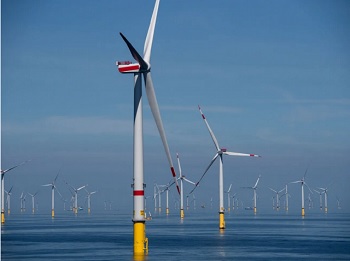 Screw in a lightbulb? Trivialize the deaths of at least two dozen whales? Convince the world that the massive installation of wind power off our East Coast won’t irreparably damage our estuarine, inshore and offshore ecosystems?
Screw in a lightbulb? Trivialize the deaths of at least two dozen whales? Convince the world that the massive installation of wind power off our East Coast won’t irreparably damage our estuarine, inshore and offshore ecosystems?
The folks at NOAA/NMFS (and with the convenient parroting of myriad so-called environmentalists, and BOEM, the other part of the federal cheerleading squad selling Ocean Wind as a major solution to our “energy crisis”) have declared that it hasn’t been proven that there aren’t any relationships between the extensive survey work being committed by Big Wind and the associated contractors and the two dozen deaths that have been visited upon several species of whales off New York and New Jersey. What is their proof? Inadequately enough, their “proof” boils down to the fact that they have seen no proof. To my way of thinking, that’s tantamount to convicting someone of murder because there is no proof that he or she isn’t a murderer. But it appears as if, as far as dead whales and President Biden’s and New Jersey’s Governor Murphy’s windmill fantasies are concerned, that’s good enough. At least for NOAA/NMFS, BOEM and a bunch of environmental organizations.
Why?
Let’s say that you have a degree or two in some academic discipline for which the vast majority of jobs are in the public sector. And that you have a job in a public agency. Particularly in today’s and almost undoubtedly in tomorrow’s economies you probably want to hold onto that job as tenaciously as you can. In the bureaucratic world that means, as Jim Croce sang, “you don’t tug on superman’s cape. You don’t spit into the wind. You don’t pull the mask off that old lone ranger. And you don’t mess around with Jim” (or Phil or Joe).
In other words, a state-level bureaucrat is going to have a rougher time of it if he rains on Governor Phil Murphy’s parade and ditto for a federal bureaucrat and President Joe Biden’s parade. Ditto for college/university researchers and grant getting.
If you’re aware of the fervor with which whale “protectors” flock to, beat their collective breasts over, and publicize each unfortunate whale demise, you probably believe that, at least in the case of the United States, each of those deaths is brought to the attention of what are considered whale/marine mammal “authorities;” that the condition of each mortality is recorded; that the cause of each mortality is determined at best or, at the least, estimated; and that this information is collected and analyzed by educated, trained and supervised public agency personnel. The marine mammal equivalent of the county medical examiner that Jack Klugman portrayed in the long running (8 seasons) NBC series Quincy, M.E. (and described on the IMDB website as “The cases of a brilliant, if Irascible, coroner who investigates suspicious deaths that usually suggest murder.” That would be just about all a dead whale-or a serious, committed environmentalist-could hope for.
Unfortunately, in the real world the best that a dead whale gets doesn’t quite measure up to what Jack Klugman offered to the victims of accused (or convicted) murderers.
If this were the best of all possible worlds, a Jack Klugmanish individual with the necessary mental ability, degrees, licenses, certifications and supervision would be the person working on dead whales. She or he would be working on them as soon after death as possible, performing a complete autopsy (if necessary, down to the cellular level), and filing a publicly accessible, carefully designed, standardized report of the necroscopy within an appropriately brief period after the whale’s death. And each report would be readily publicly accessible.
The cost per dead whale would be affordable, and it could also be done expeditiously. In the greater scheme of (government) things It wouldn’t take very much to move three or four technicians and their equipment anywhere on the East coast in a matter of hours. Possibly costing on the order of a few thousands of dollars.
The Marine Mammal Protection Act (https://www.fisheries.noaa.gov/national/marine-mammal-protection/marine-mammal-protection-act) and the Endangered Species Act (https://www.epa.gov/laws-regulations/summary-endangered-species-act) certainly empowers NOAA/NMFS to be extremely aggressive and maybe even profligate when it comes to protecting cetaceans in general and whales in particular. And their personnel almost invariably are. But it seems that when it comes to whales in New York’s and New Jersey’s waters they have been uncharacteristically meek, mild and circumspect. Making this particularly hard to understand is the severe and growing public angst each dead whale creates, and the economic impact that these mortalities have already had-minimal at this point because they have been in the “off” season-and could continue to have on the two states’ coastal economies.
It appears as if in the world of the MMPA/ESA bureaucrats virtually anybody who has an interest in whales, has some available time and an unfulfilled wish to take a machete to a dead or dying critter that’s been floating in the ocean for some indeterminate length of time and might well have been driven over or run into by unknown vessels either pre- or post mortem, will be welcomed aboard. The assumption is that a follow-up report, which generally remains inaccessible to the public, will be filed though treated as confidential by the marine mammal protection people.
And then, on the political/bureaucratic side, we have the defenders of New Jersey Governor Phil Murphy’s “damn the whales, full speed ahead” approach to the protection and preservation of New Jersey’s irreplaceable inshore and offshore waters and the critters that call them home, (NJ Board of Public Utilities President and Governor Murphy Appointee Joseph) “Fiordaliso also disputed any link between whale deaths and the offshore wind sector, noting experts have yet to find any conclusive evidence tying the problem to the industry.*” Mr. Fiordaliso’s disputation, eerily similar to the comments of every other supporter of the windustrialization of our oceans, relies on the fact that “we have yet to find any conclusive evidence tying the problem to the (wind) industry.” Note that neither Mr. Fiordaliso nor other so-called experts-whether career federal/state agency scientists/bureaucrats or wind energy sycophants that I am aware of-have definitively stated that any institution, agency or individual has in hand conclusive evidence as to what is actually killing the whales.
But they are all, individually and collectively, willing to endorse nothing more than a belief that that conclusive evidence, though up until now elusive, is out there.
Pity the poor whales. But pity even more the hapless scientists and bureaucrats who evidently feel compelled to publicly agree with Governor Murphy’s and President Biden’s fantasies of unlimited cheap electricity at the expense of our estuarine and ocean ecosystems. And that this is more than enough justification for possibly damning the whales.
*Try substituting here “…noting experts have yet to find any conclusive evidence proving the accused murderer is innocent.”
I’ll note here that a seeming lull in New Jersey/New York whale deaths proves nothing more than the “fact” that we know as little about the spate of excessive strandings today as we did when the whales started to die. By no stretch of anyone’s imagination (excluding, of course, personnel at NOAA/NMFS and BOEM, and members of the ENGO seismic profiling deniers club) should this be proof of anything other than fact that we don’t have a clue as to the cause of what is a still an unexplained unnatural phenomenon.
New Jersey Congressman Jeff Van Drew held an investigative hearing, AN EXAMINATION INTO OFFSHORE WIND INDUSTRIALIZATION, in Wildwood, NJ on March 17. The hearing was extremely well attended, with many concerned people turned away at the door. The panel of experts, Congressional Members present, and the audience were overwhelmingly in favor of a thorough investigation of what sounded like bureaucratic/political shenanigans before the state of New Jersey and the Biden administration allows any offshore wind energy development. Interestingly the proponents of this wind energy development are trying, futilely it seems, to connect the rapidly increasing opposition to the irresponsible installation and operation of wind-driven generators with the fossil fuel industry.
A video of the hearing is available at https://tinyurl.com/7zmt4z5e starting at 26:21.
Sign a Change.org petition demanding a temporary delay in and an investigation into Governor Murphy’s/President Biden’s seriously misguided attempts to fill our inshore and offshore waters (and adjoining wetlands) with thousands of these 1,000-foot-tall monstrosities and the associated infrastructure. To sign on go to https://www.change.org/p/
Thank you for your time and attention,
Nils E. Stolpe
The Whale slaughter continues, but is this just the beginning? By Jim Lovgren
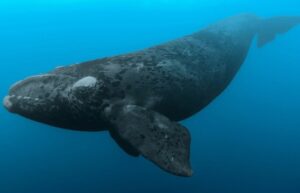 Another Humpback Whale washed ashore on a New Jersey beach on March 1 st , the 12th known Whale to die since the start of December, along the New York, New Jersey shoreline, coincident with multiple research vessels using active Sonar, seismic Pingers, and Ultra High Resolution Seismic sparkers. These are different types of equipment used to map the seafloor by Wind and oil companies, which emit loud sound pulses over 200 dBs continuously around the clock, that can travel hundreds of miles underwater.
Another Humpback Whale washed ashore on a New Jersey beach on March 1 st , the 12th known Whale to die since the start of December, along the New York, New Jersey shoreline, coincident with multiple research vessels using active Sonar, seismic Pingers, and Ultra High Resolution Seismic sparkers. These are different types of equipment used to map the seafloor by Wind and oil companies, which emit loud sound pulses over 200 dBs continuously around the clock, that can travel hundreds of miles underwater.
While the damage caused by Naval high powered active sonar, both mid and low frequency, is documented and admitted by the US Navy, the use of lower powered active sonar [both low and mid frequency] has not yet been linked to marine mammal strandings. Of course the US government has not funded any research into this issue, so that they can claim no evidence of a link between strandings and the use of this lower powered active sonar. Active Navy sonar operates at a level of 230 to 240 dBs one meter from its sound source and any unfortunate animal to be within 50 feet of operating Navy sonar will die a horrible death as its internal organs turn to mush by the powerful sound waves. The lower power sonar used by the research vessels creates sounds in the low 200 dBs range, which while not powerful enough to kill immediately, may kill indirectly due to its constant 24 hour a day usage, by a number of different boats within the New York Bight area. The government’s claim that there is no evidence that the research vessels noise-making sonar, or seismic sparkers are linked in any way to the recent Whale strandings, is being put to the test with each Whale death.
As more research vessels ply our waters, more dead Whales wash up on the beach. This is just the start of the gigantic ecosystem changing industrialization of the US continental shelf from the Gulf of Maine to Florida. The Biden administration’s stated goal of 30 gigawatts [GW] of offshore wind power by 2030 means that there will be over 3,400 individual wind turbines permanently occupying over 2,400,000 acres of ocean bottom. Once operational, they will form an imposing gauntlet of noise, vibrations, and electro-magnetic fields that marine mammals, turtles, fish, and birds will have to migrate through. This is especially critical in the area east of Rhode Island to south of Nantucket where the lease areas stretch from shoal waters to far offshore and has been designated as critical habitat for the endangered Northern Right Whale. If they want to avoid the noise of an operating wind farm they will have to swim in the inshore shipping lanes, where they suffer their most fatalities, or farther offshore
where food sources may be scarcer or even non-existent while having to navigate through the maze of offshore lobster and crab buoy’s.
In a recent Coast Guard notice to mariners for two CG districts in the New York bight it was announced; “TerraSond will be conducting geophysical survey activities within the Bluepoint Wind lease area [OCS-A 0537], 38 nautical miles [nm] off the coast of New York and 53 miles off the coast of New Jersey, from March 1 through September 30, 2023, 24 hours a day, seven days a week. Equipment on scene will be the GO Adventurer survey vessel, utilizing sidescan sonar, multibeam bathymetry echo sounder, cesium vapor magnetometer, parametric sub-bottom profiler, and ultrashort base line acoustic transceiver.”
There are dozens of these vessels and their support ships presently operating off the east coast all using high powered sonar and seismic equipment. The use of the dreaded seismic air guns has been replaced by the kindler, gentler Sparkers and pingers, which generate seismic sound by an electrical
charge as opposed to the air gun’s compressed air discharge. While the air gun arrays create noise at the 240 to 250 dBs level at the source, the sparkers noise is lower, operating in the 200 to 210 dBs range. Used in low frequency’s this sound can travel hundreds of miles in a spreading pattern which loses strength the farther from the source it travels. Since there are presently anywhere from 3 to 6 research vessels presently using either sonar or seismic equipment from Cape May to Nantucket Island it stands to reason that the complete continental shelf of the Mid Atlantic/Southern New England region is blanketed with some level of sonar or seismic noise. With other research vessels working from South Carolina, north into the Gulf of Maine the whole east coast is being blanketed by more underwater noise than ever before, all along the migratory paths of multiple endangered species.
Since marine mammals rely on hearing to feed, navigate, avoid prey, and mate, the intrusion of so much man made noise in such a short period of time is bound to be physically harmful to these sound sensitive animals. [read “Impacts of Navy sonar on Whales and dolphins : Now beyond a smoking gun? E.C. Parsons”] If a Whale is in an area where seismic or sonar is being used it will affect his ability to hear and communicate, and likely trigger a flight response, expending valuable fat reserves while doing so. An analogy; you and a friend go out to diner at a local restaurant that seats fifty people. There are six other people in the room at different tables and you and your friend can have a pleasant conversation. But as more people are seated the background noise starts getting louder, and you find yourself having to repeat statements because your friend can’t hear them. When the room is full, you can no longer hear each other from the accumulated amount of noise echoing from wall to wall. After sufficient noise
harassment, you ask for the check and leave. Whales don’t really have a way to leave their annual migratory path, its ingrained in them, and even small changes in a Whales migratory path can expend so much energy that it causes the animal physiological harm.
We now have 23 dead Whales on the east coast within a three month period, and despite what government officials claim, it is not a normal amount. A number of those deaths coincided with the operations of the RV Fugro Enterprise, which has multiple different sonar’s, and also features a GeoAcoustics 5430/5210 Sub Bottom Profiler, also known as a seismic pinger. The timing of strandings with the Fugro Enterprise operations has been documented by use of the AIS vessel tracking system. Presently geophysical surveying has been finished or is ongoing in about one third of the leased wind sites on the east coast.
When surveys in one area are completed, the research vessels move on to a different lease site, as the demand for these specialized vessels is presently intense. In their place come the construction crews, vessels, barges, jacking platform, ships, etc. all preparing for the loudest assault on the
environment, the pile-driving part, where a 150 to 200 ton hydraulic “hammer” is dropped onto the anchor pile, driving it repeatedly further into the seabed with each timed 250 dBs loud drop. One of the loudest man-made underwater sounds there is. Not to worry though, that sound will be mitigated, by a “Bubble curtain” which will trap the sound and reduce any harm to nearby animals, so say the bureaucrats who also claim no connection of sonar to the strandings. Regarding underwater sound mitigation techniques, quoting from, [Parsons et al, 2009] “It may be a long time before technology and methods are easily available to answer the many still unanswered questions about the exact nature and degree of the impacts of sound on cetaceans, especially when we know that many of the mitigation measures in place for protecting cetaceans against the impacts of sound are untested “best guesses” or indeed, are known to be ineffectual.”
While the pile driving is going on, the sea bed will be carved into trenches so they can bury 6,800 miles of undersea high voltage cables which connect the turbines to the substations and then to shore, utilizing a whole other type of construction vessel and further increasing vessel traffic. Eventually some of the turbines will start working introducing a new sound, plus the vibrations of the turbine itself into the marine environment. Electro- magnetic fields will be created around the turbines, substations, and the buried cables under the seabed which will affect benthic animal movements and migrations. This will go on for decades. The slaughter has just begun.

NOAA and BOEM; Ignorance is Bliss. By Jim Lovgren
For about twenty years the Natural Resources Defense Council [NRDC] engaged the US Navy in a legal battle over the effects of the Navy’s use of Mid Frequency Sonar in training exercises and its impact on marine mammals and other creatures, with one case even reaching the US Supreme court. While there are many different aspects of NRDC’s legal actions, the results of the litigation have produced an enormous amount of scientific data and research regarding the effects of underwater sound on marine creatures, with an emphasis on Sonar and marine mammals. They forced the Navy to admit that their use of sonar had resulted in the unintentional mass strandings of many different marine Mammals in a dozen different instances around the world, primarily involving Beaked whales, that are classified as being low to mid frequency cetaceans. >click to read< 08:48
NOAA and BOEM; Ignorance is Bliss. By Jim Lovgren
 For about twenty years the Natural Resources Defense Council [NRDC] engaged the US Navy in a legal battle over the effects of the Navy’s use of Mid Frequency Sonar in training exercises and its impact on marine mammals and other creatures, with one case even reaching the US Supreme court. While there are many different aspects of NRDC’s legal actions, the results of the litigation have produced an enormous amount of scientific data and research regarding the effects of underwater sound on marine creatures, with an emphasis on Sonar and marine mammals. They forced the Navy to admit that their use of sonar had resulted in the unintentional mass strandings of many different marine Mammals in a dozen different instances around the world, primarily involving Beaked whales, that are classified as being low to mid frequency cetaceans. These mammals communicate, navigate and feed using low to mid frequency sounds. While this series of lawsuits resulted in the recognition of the harm that high powered Sonar can cause to marine creatures, it did not address the issue of the damage that lower sound levels can cause. This also coincided with a growing recognition that the amount of human caused noise in the natural marine environment was reaching a dangerous level, and was having impacts on the creatures that reside there, which may be worse that many of the more visible signs of pollution.
For about twenty years the Natural Resources Defense Council [NRDC] engaged the US Navy in a legal battle over the effects of the Navy’s use of Mid Frequency Sonar in training exercises and its impact on marine mammals and other creatures, with one case even reaching the US Supreme court. While there are many different aspects of NRDC’s legal actions, the results of the litigation have produced an enormous amount of scientific data and research regarding the effects of underwater sound on marine creatures, with an emphasis on Sonar and marine mammals. They forced the Navy to admit that their use of sonar had resulted in the unintentional mass strandings of many different marine Mammals in a dozen different instances around the world, primarily involving Beaked whales, that are classified as being low to mid frequency cetaceans. These mammals communicate, navigate and feed using low to mid frequency sounds. While this series of lawsuits resulted in the recognition of the harm that high powered Sonar can cause to marine creatures, it did not address the issue of the damage that lower sound levels can cause. This also coincided with a growing recognition that the amount of human caused noise in the natural marine environment was reaching a dangerous level, and was having impacts on the creatures that reside there, which may be worse that many of the more visible signs of pollution.
The efforts of NRDC regarding the damaging effects of Naval sonar has saved the lives of many marine creatures by forcing the Navy to comply with the many US laws that protect the environment. They have become one of the worlds leading experts on the effect of noise on marine mammals, yet
curiously they remain silent on the issue of the recent strandings of Whales along the US east coast, as coincidently research vessels using low frequency sonar have inundated the area for geological mapping of the seafloor and substrates for industrial wind power turbines. A group that was so concerned about saving the Whales from underwater noise, has conveniently forgotten their concern because that noise is created by vessels employed by wind companies. Those companies and the US government have worked in unison to deny any link at all between the recent strandings and the work being done for offshore wind development. High level US officials have categorically denied that there is any evidence of the noise being produced having a detrimental effect on marine mammals despite decades of work in regard to the harm being caused by human produced noise in the marine environment. Existing science suggests the link is there.
In a paper by NRDC’s Joel Reynolds, titled “Submarine’s, Sonar, and the death of Whales”, published by William and Mary Environmental Law and Policy Revue [vol. 32:759] in 2008, Reynolds writes; “There is no longer a serious scientific debate about the connection between sound and marine
mammal mortality. A range of experts, from the international Whaling Commission’s {IWC} Scientific committee [2004 report] to the U.S. Navy’s own commissioned scientists, have agreed that the evidence linking mass strandings to mid-frequency sonar is “convincing” and “overwhelming”. Consultants retained by the Navy concluded that the evidence of sonar causation is in our opinion, completely convincing and that therefore there is a serious issue of how best to avoid/minimize future beaching events. Potentially related strandings have occurred repeatedly around the world, with stranded animals found with bleeding around the brain, emboli in the lungs, and lesions in the liver and kidneys, symptoms resembling a severe case of decompression sickness, or the “bends”. Because these injuries occurred in the water, before the animals stranded, scientists are concerned that Whales turning up on shore may represent only the tip of the iceberg, with substantially larger numbers dying off-shore. Other sources of noise, such as the airguns used in seismic surveys, may have similar effects.”
The paper also has this statement; “Though a prominent focus of public concern and reporting in the media, these stranding events represent only one manifestation of injury related to exposure to intense noise. Indeed, it is the cumulative impact that these stressors have on the behavior of marine mammals, particularly in already depleted populations, that may pose the greatest threat; what has been called a “death of a thousand cuts”. Because marine mammals depend on sound to navigate, find food, locate mates, avoid predators, and communicate with each other, flooding their habitat with high intensity, anthropogenic noise poses a substantial risk of interference with these and other activities”. Footnoting this point; NRDC’s Michael Jasny, quoted Dr. Sylvia Earle’s “death of a thousand cuts “, and stated that “preliminary attempts at modeling the energetics of marine mammals [the amount of energy an animal has to spend to compensate for an intrusion] suggest that even small alterations in behavior could have significant consequences for reproduction or survival if repeated over time”.
Further in the document are these statements; “Also in November 2005, the parties to the Convention on Migratory Species [CMS] passed a resolution naming marine noise among six human threats to cetacean populations. The resolution calls on the CMS’s Scientific Council to assess whether marine noise is adequately addressed in the convention’s threat abatement activities.”
“The UN General Assembly established an “Ad Hoc Open-Ended Informal Working Group to study issues relating to the conservation and sustainable use of marine biological diversity beyond areas of national jurisdiction” [i.e. on the high seas] In February 2006 that working group convened its first
meeting, where it recognized ocean noise as a “growing human pressure” that requires urgent action through international cooperation and coordination.”
Lastly, starting off the recommendations section of the paper is this; “The accumulating scientific evidence of noise-induced harm, including mass strandings of marine mammals around the world, is a wake up call to a significant environmental problem. While its complexity precludes a simple
or an immediate solution, some progress has already been made, both domestically and globally. But much more is clearly needed now, at a point where meaningful and effective solutions can have an impact BEFORE the problem proliferates out of control, it’s causes intractable and it’s impacts
irreversible”.
This last sentence is critical, because we are already near the point where long term damage from the multiple noise sources involved in the production of offshore wind energy is intractable, and its impacts to marine mammal populations irreversible. Extinction is forever.
Many marine mammal species migrate annually along the North American coast and they have had to adapt during their lifetimes to a growing amount of human created noise, some of it deadly. It has created a high stress life for them with a confusing array of sounds including low frequency noise from distant sonar and seismic testing, which can trigger fight or flight responses. Repeated stress responses can be detrimental physiologically to animals and could lead to premature death. The average life span of every species of Whales along the US coast has dropped dramatically in the last few decades, coinciding with the rise in human produced noise in the marine environment. Have Whale species in the North Atlantic reached the tipping point in how much human produced noise they can withstand and still survive, or have they passed the point of no return with the recent introduction of almost relentless noise from low frequency sonar research vessels along the coast?
NOAA and BOEM are closing their eyes to science and scientific protocol in regard to the recent Whale strandings. They ignore a growing mountain of evidence indicating that many species of whales are more sensitive to sound then previously thought, with research showing tagged Cuvier’s beaked
Whales responding to only 89 dB re 1 u Pa. A paper published by Frontiers in Marine Science, entitled; “Impacts of Navy Sonar on Whales and Dolphins: Now beyond a Smoking Gun? By E.C.M. Parsons in 2017 cites numerous recent studies showing Whales sensitivity to sound is greater than believed, and he reasons then that the US harassment levels of sound are far higher than they should be, with TTS and PTS being reached at lower levels then acknowledged. Almost all of the research that’s been done has admitted to not having enough science to be certain of any effects of under water noise but they all urge the use of the Precautionary Principle in regard to its possible effects. This important paragraph highlights that:
“The importance of not delaying conservation action when a concern exists, but scientific data and analysis have not incontrovertibly established the threat exists, i.e. “the precautionary principle”, has been enshrined in a number of international laws [Hey,1991] including the 1992 Convention on
biological Diversity [Principle 15 of the so-called “Rio Summit”]. Because of this level of uncertainty and difficulty in establishing beyond a reasonable doubt trends and threats in cetacean populations, it has been argued that in order to effectively conserve and manage populations one must be precautionary, as otherwise catastrophic declines in cetacean populations could occur before science catches up with the problem”.
We only have one last chance to save the North Atlantic Right Whale from extinction, scientific protocol calls for us to make the most of it. Endangered marine mammals are facing a survival crisis that is complicated by the increase in human made noise, which may even have more population level effects then ship strikes and fishing gear encounters. The sheer enormity of Biden’s offshore wind projects dwarfs in size and scope any previous usages of the marine environment throughout history, its effects are bound to be enormously destructive to the entire marine ecosystem of the east coast. No one should be able to ignore science just because it doesn’t suit their purposes.

Are NOAA scientists being silenced? By Jim Lovgren
Since the beginning of December there have been at least twelve strandings of whales along the New York and New Jersey shores, all resulting in the death of these animals. An abnormal amount of strandings have been reported in a few southern states as well during this time frame, exacerbating
what NOAA has declared as an unusual mortality event taking place on the East coast that started in 2016. These deaths include, Humpback, Minke, Fin, Sperm, Northern Right Whale, various Dolphins and more since 2016. Many of the Mammals stranded are endangered species, with the Northern Right Whale considered critically endangered having a population of less then 350 animals remaining, which is down from close to 500 only a decade ago. A curious coincidence among these particular marine mammals is that they are classified as Low frequency cetaceans, meaning that they communicate, navigate and feed using low frequency sound. Similar to the frequency most commonly used for sonar mapping or submarine detection by the Navy. >click to read the article< 16:02
Are NOAA scientists being silenced?
 Since the beginning of December there have been at least twelve strandings of whales along the New York and New Jersey shores, all resulting in the death of these animals. An abnormal amount of strandings have been reported in a few southern states as well during this time frame, exacerbating
Since the beginning of December there have been at least twelve strandings of whales along the New York and New Jersey shores, all resulting in the death of these animals. An abnormal amount of strandings have been reported in a few southern states as well during this time frame, exacerbating
what NOAA has declared as an unusual mortality event taking place on the East coast that started in 2016. These deaths include, Humpback, Minke, Fin, Sperm, Northern Right Whale, various Dolphins and more since 2016. Many of the Mammals stranded are endangered species, with the Northern Right Whale considered critically endangered having a population of less then 350 animals remaining, which is down from close to 500 only a decade ago. A curious coincidence among these particular marine mammals is that they are classified as Low frequency cetaceans, meaning that they communicate, navigate and feed using low frequency sound. Similar to the frequency most commonly used for sonar mapping or submarine detection by the Navy.
The US Navy has performed extensive research into the effects of sonar on marine organisms including on its own divers, [Appendix 1 A -Safe diving distances from transmitting sonar], and reluctantly admitted that their sonar operations have been the cause of a number of marine mammal
strandings through the years. Granted they did not want to admit this, but the facts, and sheer number of “coincidences” of their sonar testing and marine mammal strandings were too hard to ignore. I believe that the Navy knows a lot more about the underwater effects of sound then they are letting on, as their use of Dolphins for military purposes undoubtedly would have involved extensive research into how much sound a Dolphin can experience without causing it physical damage. Stands to reason if they did extensive research into the effect of sonar on human divers, then they also did the same for the Dolphins they spent millions of dollars to train. Much of their research is available to the public, and most likely has been used by NOAA as source material, because it seems like NOAA refuses to fund their own research into the effects of both seismic and sonar operations. Why not?
I believe there is more information concerning the effects of sonar on marine organisms, but it is not available because of national security concerns. It may be that the recent mass stranding events happening along the East Coast are the result of Naval operations searching for Russian submarines
lurking offshore. The Russia/ Ukraine war has brought the world perilously close to WW3, and knowing the where abouts of enemy submarines is essential to our country’s defense and survival. The Navy does take extensive precautions before using their high output sonar before training operations, but in the case of war or avoidance of it, precautions may fall by the wayside. In matters of national defense, the protection of marine creatures, takes a backseat to the protection of humans, as it should.
But what about private companies using similar sonar operations for mapping the seabed for monetary reasons? If the US Navy has admitted and taken precautions to minimize harm to marine organisms from their sonar operations, what are the offshore wind companies doing to minimize the
effects? The Navy and the wind companies sonar are both operating in the low to mid-range frequencies, but the navy’s sonar operates at a higher power output of decibels that is only used in short and intermittent bursts, due to the powerful sound waves it generates. There has been a fleet of
research vessels off the US east coast for over five years now, and they are using high powered low to mid-frequency sonar to map the bottom and its substrates. This sound is almost continuous unlike the short bursts from the navy sonar, but it is not as loud by decibel measurements, which are measured differently in the water then the air. Low frequency sounds in the water travel much further then high frequency sounds, and that difference varies according to the environmental conditions the sound is traveling in. Marine mammals have been classified by the Navy into three different functional hearing groups, high-frequency cetaceans, mid-frequency cetaceans, and low-frequency cetaceans, meaning that enough research has been conducted to actually know what sound level certain species utilize for communication, and feeding, and how certain levels of that noise can affect [harass] them. While the Navy has admitted the effects of their high powered sonar using low to mid-frequencies in short bursts, there is no research into the effects of the cumulative impact of a constant stream of low to mid frequency sonar on marine creatures. Why not?
Sound waves dissipate over longer distances, but low-frequency sound can travel hundreds of miles or more under certain conditions and used in a consistent, relentless way, probably contribute to marine mammal stranding events, as the ambient noise of the underwater environment is vastly
increased by manmade noise, which interferes with the mammal’s internal navigation, and communication, leading to confusion and attempts to swim as far away from the noise source as possible. I say probably because this is only speculation as there is no per reviewed science to prove it.
Which leads to the question, why has NOAA, the parent agency of the National Marine Fishery Service, not funded research into the effects of sonar and seismic testing on marine creatures? It seems that an agency that prides itself on the protection and sustainability of our marine resources would want to know what effect these obviously loud noises would have, particularly on endangered species such as the Northern Right Whale. Over ten years ago while BOEM was trying to push through an enormous seismic mapping of the US east coast for offshore oil drilling, I found while trying to research the effects of seismic testing, that there was no research about it being done, except for a couple of studies from Spain and Australia, which proved that seismic testing had deadly effects on Squid {M .Andre, Spain] and on Scallops in an official Australian government study.
During these discussions BOEM constantly stated that there was no science to prove that seismic testing did any harm to marine organisms. There is a reason for that. Science doesn’t come cheap, it involves many work hours [years] by PHD level scientists that someone has to pay. The oil industry had no reason to fund research into the effects of seismic testing, they knew it would cause the end of its use. That means that the US government should be the funding source of research grants into the effects of sonar and seismic testing especially on endangered species. The protected resources
department of NOAA has spent hundred’s of millions of dollars to protect and restore populations of endangered marine species including Turtles, Whales, Porpoises, and Dolphins, meanwhile these animals remain endangered by this agencies lack of science about the effects of such loud noise to
them. One would think that if you are trying to save an animal from extinction you would want to know every threat that it faces. About 40 % of Whale strandings are caused by either a ship strike or entanglement with fishing gear, these are obvious, what about the other 60%? Necropsies are
performed on some of these animals, but there are no standards on what organs or tissues should be examined. Seismic and sonar testing have proven to damage the inner ear of marine mammals and should be a critical focus on any marine mammal stranding necropsy, yet we find it is rarely performed. Why? NOAA always claims that the animal is too decomposed for the necropsy of this delicate inner ear tissue, so why was the inner ear not examined on the Humpback whale that died on the beach in Lido Long Island? It was as fresh as they come. It seems NOAA doesn’t want to know, or confirm the public’s suspicions concerning sonar testing by offshore wind research vessels.
On January 16 th , Benjamin Laws, a deputy chief with NOAA’s fisheries office of protected resources said; “There is no information supporting that any of the equipment used in support of off- shore wind development could directly lead to the death of a Whale”. This statement is true only
because his agency refuses to fund the science to find out if we are seriously endangering the survival of many marine mammals. He should be ashamed of himself. He knows that it is almost impossible to directly kill a whale with sonar, but that whale can be deafened and lose his ability to navigate, communicate and feed, eventually dying. But not “directly”. This is the type of weasels we are dealing with in NOAA and BOEM. They do not want any research into sonar or seismic testing because the results will harm their biggest patrons, either the oil industry, or offshore wind investors. If this is the case, then science is being driven by politics,[money] and not a real concern for actual truth.
I know that this lack of science is not the fault of the scientists at NOAA, especially those that have dealt with marine mammals all their adult lives. These strandings must be killing them, to watch the majestic Northern Right Whale that many of them have spent their lives protecting, approach
extinction because of some unknown phenomenon causing excess mortality. Here is some information to help them. None of the recent strandings along the New York/New Jersey shore showed fishing gear entanglement, and during the months of December and January there is very little fishing activity that could cause entanglements along those shores. Likewise, the food source that NOAA claims the whales could have been chasing, Menhaden, have migrated south of New Jersey waters by December. They also rarely wander farther than ten miles offshore. As for shipping, there are major shipping lanes going into and out of the New York harbor in three different directions so ship strikes are a problem, and at least a couple of the recent deaths are from ship strikes. That leaves the rest them unexplained with the only difference being that prior to the start of the adverse mortality event in 2016, the east coast wasn’t plastered with sonar research vessels. These deaths are not a coincidence, and I’m sure many scientists employed by NOAA agree with that, but are afraid to come forward because not only will they be fired, but they will be blackballed from any job in their field. After spending a third of their lives earning a PHD in a very specific area of expertise with little usage except to government sponsored science, they are silenced by fear of unemployment and career destruction. So they remain silent, as the Northern Right Whale vanishes before their eyes.
Coast Guard suspends search for the Master of a 32-foot sunken fishing vessel off Florence
 NORTH BEND, Ore. —The Coast Guard suspended search efforts at 12:30 a.m. Sunday for the master of a 32-foot fishing vessel that sank approximately 35 miles offshore Florence late Friday night.
NORTH BEND, Ore. —The Coast Guard suspended search efforts at 12:30 a.m. Sunday for the master of a 32-foot fishing vessel that sank approximately 35 miles offshore Florence late Friday night.
The missing man has been identified as Mike Morgan, 68.
A 47-foot Motor Lifeboat crew from Coast Guard Station Siuslaw River was the first to respond on scene, followed by multiple Coast Guard aircraft, Motor Lifeboat stations, including the 110-foot Coast Guard Cutter Orcas and crew. Rescue crews saturated approximately 232 square-miles of search area over a 24-hour period but were unable to locate Morgan.
Watchstanders at Coast Guard Sector North Bend received a mayday call around midnight on Friday from Morgan, the master of fishing vessel White Swan III, reporting that his vessel was sinking in the northern section of Heceta Banks fishing grounds. A Motor Lifeboat crew from Station Siuslaw River arrived on scene shortly after the initial distress call and located a debris field. The Coast Guard recovered an unresponsive female victim early Saturday morning, later discovered to be a crew member aboard the White Swan III. The female victim was pronounced deceased by local emergency crews.
Involved in the search were:
Coast Guard Sector North Bend;
Coast Guard Sector Columbia River MH-60 Jayhawk helicopter crews;
Air Facility Newport MH-65 Dolphin rescue helicopter crew;
Sector North Bend MH-65 Dolphin rescue helicopter crews;
Coast Guard Station Siuslaw River 47-foot Motor Lifeboat crews;
Coast Guard Station Umpqua River 47-foot Motor Lifeboat crew;
110-foot Coast Guard Cutter Orcas;
13th Coast Guard District Command Center.
Pending further developments, the Coast Guard has suspended search efforts at this time.
“The decision to suspend an active search and rescue case is never easy, and it’s only made after careful consideration of myriad factors,” said Scott Giard, Coast Guard Search and Rescue Program Manager. “Our thoughts and condolences are with the families throughout this unimaginably challenging time.”
-USCG-

Updated: Coast Guard searches for the Master of a 32-foot sunken fishing vessel off Florence
North Bend, Ore. The U.S. Coast Guard is searching for the master of a 32-foot fishing vessel that sank Saturday morning approximately 35 miles offshore Florence. Missing is Mike Morgan, 68. Watchstanders at Coast Guard Sector North Bend received a mayday call at approximately 12 a.m. Saturday from Morgan, the master of the white-and-black fishing vessel F/V White Swan III, reporting that his vessel was sinking in the north end of the Heceta Banks fishing area. Morgan reported that a female crew member was also aboard the vessel. The 13th Coast Guard District Command Center received an emergency position indicating radio beacon alert from F/V White Swan III. >click to read< 18:19
Crew member found ‘unresponsive’- search for ship’s captain ongoing – Searchers have recovered an unresponsive crew member from the Pacific Ocean and continue to scan the waves for a missing man after a fishing boat sank Saturday off the Oregon coast, officials said. They also have not publicly identified the person found unresponsive. >click to read< 19:40
Coast Guard searches for the Master of a 32-foot sunken fishing vessel off Florence
 NORTH BEND, Ore. — The Coast Guard is searching for the master of a 32-foot fishing vessel that sank Saturday morning approximately 35 miles offshore Florence.
NORTH BEND, Ore. — The Coast Guard is searching for the master of a 32-foot fishing vessel that sank Saturday morning approximately 35 miles offshore Florence.
Missing is Mike Morgan, 68.
Watchstanders at Coast Guard Sector North Bend received a mayday call at approximately 12 a.m. Saturday from Morgan, the master of the white-and-black fishing vessel F/V White Swan III, reporting that his vessel was sinking in the north end of the Heceta Banks fishing area. Morgan reported that a female crew member was also aboard the vessel. The 13th Coast Guard District Command Center received an emergency position indicating radio beacon alert from F/VWhite Swan III.
Upon arrival at the scene of the EPIRB location, an MH-65 Dolphin rescue helicopter crew from Air Facility Newport spotted a debris field and a life raft. The aircrew had to return to base due to heavy fog and low visibility.
Crews aboard the 87-foot Coast Guard Cutter Orcas, a Sector North Bend MH-65 Dolphin rescue helicopter crew, and a Coast Guard Station Umpqua River 47-foot Motor Lifeboat are currently saturating an approximately 21 square-mile area offshore Florence to locate Morgan.
Involved in the search are:
Sector North Bend;
Air Facility Newport MH-65 Dolphin rescue helicopter crew;
Sector North Bend MH-65 Dolphin rescue helicopter crews;
Coast Guard Station Siuslaw River 47-foot Motor Lifeboat crews;
Coast Guard Station Umpqua River 47-foot Motor Lifeboat crew;
87-foot Coast Guard Cutter Orcas and crew.
Mariners and the public are encouraged to contact the Sector North Bend Command Center at 541-756-9210 if anyone has information in the effort to locate the missing master of F/V White Swan III.
-USCG-
U.S. Coast Guard 13th District PA Detachment Astoria
Contact: Coast Guard PA Detachment Astoria
Office: (206) 251-3237
After Hours: (206) 251-3237
PA Detachment Astoria online newsroom
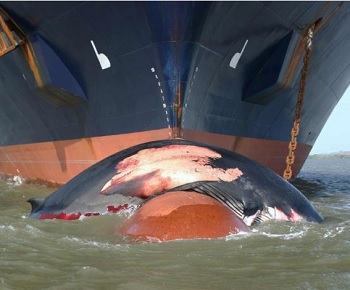
Ship strikes: Saving the Whales is Something the Shipping Industry Needs to Address Immediately
It is a little known fact that up to 20,000 whales die each year because of lethal collisions with vessels. When presented with the sight of one of the great mammals lying dead on the bows of a container ship as shown above the message comes home, but for most of the stricken animals they are fated to die unseen beneath the waves.,, Whale ship strikes have now become a significant threat to big cetaceans. Collisions kill 20 times more whales than the controversial practice of whale hunting or whaling. >click to read< 08:50

EU humiliation: Brutal reality of Canada deal without UK exposed by Brexiteers
The EU’s celebrated trade deal with Canada has been laid bare after a pro-Brexit organization exposed Ottawa has faced a worsened situation since the UK historically voted to leave the bloc. Facts4EU claims Canada’s trade deficit since signing its joint pact in 2016 with Brussels has worsened by 27 percent, to around -€17.5billion (-£16bn), while the deal will be severely hampered when the UK is finally removed from the bloc. When Canadian Prime Minister Justin Trudeau agreed to the Comprehensive Economic and Trade Agreement (CETA), the trade deficit was at -€13billion (-£11.6bn), Facts4EU say. The organization say the deal with the EU will become “a whole lot less” as Canada sold 43 percent of its goods to the UK, and that when Brexit is concluded it will not enjoy such high levels of trade. >click to read< 12:35
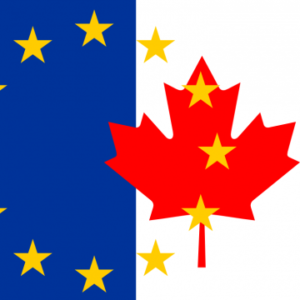
Trade minister says she’ll keep eye on U.S. probe of Canadian lobster industry
The Canadian industry gained most of the Chinese market that the Americans lost after China slapped a 35 per cent tariff on U.S. lobster exports. Canada also saw its lobster exports grow in Europe after it signed the Comprehensive Economic and Trade Agreement, or CETA, with the European Union, giving it a tariff advantage over its U.S. competitors. The Trump administration, however, has recently signed an agreement with China that removes the 35 per cent tariff. And a separate deal with Europe also removed tariffs on American lobsters that had provided the Canadian industry an advantage. Executive Director Geoff Irvine (Lobster Council of Canada) said Monday the lobster industries of Canada and the United States are now back on an even playing field. >click to read< 07:17

“We’re not sure what it means,” – Trump turns an eye on Canadian lobster, launches Trade Investigation
On Aug. 24, the United States International Trade Commission announced it will investigate the possible negative effects of the Canada-Europe Trade Agreement (CETA) on American lobster exports. The investigation was requested by U.S. Trade Representative Robert Lighthizer. The investigation will also examine tariff treatment of Canadian lobster in the United Kingdom, China and other countries. “We’re not sure what it means,” said Geoff Irvine, executive director of the Lobster Council of Canada. “We’re studying it. The government of Canada is studying it. Now we’re talking to our colleagues in the U.S. and we’re trying to figure out how best to manage it from the Canadian side.” >click to read< 08:36

Lobster Council of Canada implementing long-term value marketing strategy
A three-year marketing and promotion strategy for Canadian lobster is being implemented by the Lobster Council of Canada.,,, “We will then implement a comprehensive generic marketing and promotion strategy in the domestic market, the United States and take advantage of positive trade agreements such as CETA and CPTPP in Europe and Asia,” says Irvine.,, The North Atlantic Right Whale, the Seafood Import Monitoring Program, the Marine Mammal Protection Act, Invasive Species in Sweden and EU, and Lobster Husbandry in EU and North America are among the known issues that can impact the marketplace for Canadian lobsters, he says. >click to read< 09:39
October is National Seafood Month & Aragosta Mama wants to challenge you.
September 17, 2019
October is National Seafood Month & Aragosta Mama wants to challenge you.
Aragosta Mama is a lifestyle brand dedicated to commercial fishing community + culture and is hosting the Pesce Eater Challenge in October to heighten awareness about seafood & ocean health.
Harpswell, Maine— September 17, 2019 — October is National Seafood Month. The origin for the designation is unknown but nevertheless it should be celebrated and promoted, especially so here in Maine. Aragosta Mama was created by Monique Coombs (author) who wants more people to understand and love the community and culture that is inspired by the commercial fishing industry. Commercial fishing is important to coastal communities around the country and provides innumerable jobs and healthy seafood to feed a fast-growing population.
Pesce Eater Challenge
To celebrate National Seafood Month and bring more awareness to the importance of seafood and fishing, Aragosta Mama created the Pesce Eater Challenge that will begin October 1 and continue daily throughout the month.
The Challenge will work thusly: Participants who sign up at www.aragostamama.com will receive a short daily email that will ask them to create space in their day to think more deeply about their connection to seafood and the ocean. Participants can participate as much or as little as they choose and are not expected to become pescetarians for the duration of the challenge. The theme of each email will rotate and be one of four themes that the Aragosta Mama site focuses on, which are fishermen, family, flavor, and fashion. The emails will include things like recipes, tips for decreasing your carbon footprint, promo codes to seafood and eco-friendly businesses, articles from participating partners, and information and stories about fishermen and their businesses.
Partners include businesses Dock to Dish, Pescavore Seafood, Harbor Fish Market, and Seafood Nutrition Partnership. Partners are engaging by providing content for emails and/ or promotional codes for product.
Aragosta Mama was created to provide a new and authentic voice to the narrative surrounding fishing and fishermen. Seafood marketing is too often based on educating consumers about fish stocks, gear management, and health, and negates the very important role of the fishermen in the food system, which is incredibly dehumanizing. Aragosta Mama aims to fill this gap by offering a creative and authentic perspective from fishing communities in Maine specifically, and the coastal US generally. As mentioned above, the site focuses on four themes which are fishermen, family, flavor, and fashion. These four themes encompass the culture and community that surrounds fishermen and their families and communities, and reaches a broader audience by taking into account new perspectives, such as fashion and how fashion trends have been inspired by fishermen, and how what we choose to wear is just as important to the health of the ocean as what we choose to eat.
###
Monique Coombs lives on Orr’s Island and is married to a commercial fisherman. She has worked in the fishing industry for over a decade, currently for the Maine Coast Fishermen’s Association, and writes about the fishing industry on Aragosta Mama as well as for publications like National Fisherman and the Maine Lobstermen’s Association’s newsletter, The Landings.
For more information:
Monique Coombs
[email protected]
www.aragostamama.com
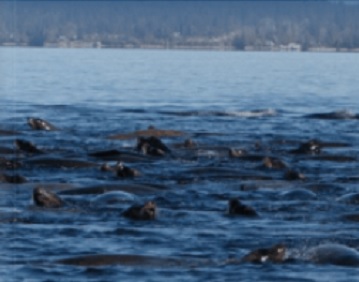
Sea Lions, Other Marine Mammals Discovering South Sound Anchovy Boom
A large suite of marine mammals has discovered Deep South Sound’s new bounty of anchovies, schools of which are now so numerous they’re routinely observed during regular aerial surveys. For three months this past winter, WDFW biologist Steve Jeffries observed hundreds of California sea lions, as well as harbor seals, harbor porpoises and long-beaked common dolphins feeding on a massive pod of the skinny, silvery baitfish in Case Inlet north of Olympia. Anchovy populations have boomed in these waters since 2015 and the Blob’s warm waters. What’s more, the pinnipeds and cetaceans appeared to be teaming up on them. >click to read<20:01

In Battle Over Whale, Judge Tears Up Agency Stonewalling
A federal judge opened the door Thursday for environmentalists to bolster claims over a lobster fishery they blame for the declining population of an endangered whale. Ordering the National Marine Fisheries Service to produce discovery, U.S. District Judge James Boasberg said the Endangered Species Act allows the agency’s challengers to use evidence outside the administrative record. “In order to accurately assess the alleged crisis of these cetaceans, the court will benefit from a record that reflects the actual, ongoing effects of the lobster fishery on the species,” the 16-page ruling says. The cetaceans at issue are called the North Atlantic right whale. There were roughly 455 right whales left as of 2016, and the Conservation Law Foundation says at least 18 of these have been killed since 2017. >click to read<16:28
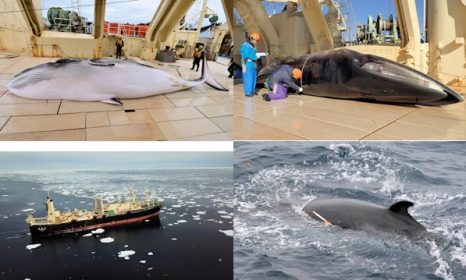
Japanese Whaling Fleet Reaches Quota
Japan’s whaling fleet has returned home from the Southern Ocean after a successful 143-day investigation “without being interfered with by the anti-whaling group.” Of the 333 whales killed, 152 were males and 181 were females. A preliminary analysis of pregnancy rate suggests healthy fertility rates, says the Japanese Institute of Cetacean Research. The animals’ earwax plugs and eye lens were used to determine age, blubber was used to determine nutritional status, gonads were used to obtain breeding information and digestive system contents used to examine prey species. >click to read<21:34
New record of whale strandings along coast
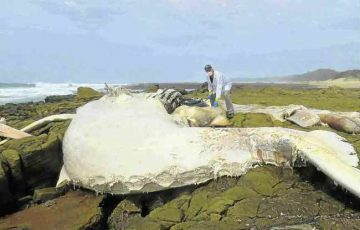 While East Londoners have been enjoying a bumper season of whale sightings over the past few weeks, a fourth humpback whale in less than a month has beached and died along the East London coastline. East London Museum principal scientist Kevin Cole said the strandings were a new record for his cetacean database. Yesterday, Cole examined the badly decomposed carcass of the fourth dead humpback on the rocks west of Chintsa West.,,, He said a number of factors could be responsible for the strandings including old age, pollution, ship strikes and the effects of seismic blasting to explore for gas and oil offshore. click here to read the story 11:34
While East Londoners have been enjoying a bumper season of whale sightings over the past few weeks, a fourth humpback whale in less than a month has beached and died along the East London coastline. East London Museum principal scientist Kevin Cole said the strandings were a new record for his cetacean database. Yesterday, Cole examined the badly decomposed carcass of the fourth dead humpback on the rocks west of Chintsa West.,,, He said a number of factors could be responsible for the strandings including old age, pollution, ship strikes and the effects of seismic blasting to explore for gas and oil offshore. click here to read the story 11:34

One plant is processing more shrimp thanks to the elimination of tariffs under European free trade deal
The new free trade deal with Europe has only been in effect for a few days but one seafood processor in Newfoundland and Labrador says it’s already meant more work. Ocean Choice International has extended work at the Port au Choix plant.,, On Sept. 21 the Comprehensive Economic and Trade Agreement, or CETA, came into effect. It dropped tariffs on 96 per cent of the Canadian seafood sold into Europe.,, As part of the tradeoff for the elimination of tariffs, Newfoundland and Labrador agreed to drop minimum processing requirements. They required fish caught off the province to be processed there. click here to read the story 12:54
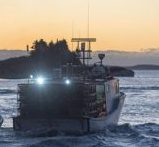
Canadian lobster in the pink thanks to European trade deal
The Comprehensive European Trade Agreement (CETA), soon to be implemented, will give a significant boost to Canada’s harvesters over those from Maine. Europeans will pay for Canadian lobsters tariff-free, while they pay a surcharge to Americans. Once freight and shrinkage fees are calculated in, lobsters can get expensive, so the CETA could make a significant difference to the prices charged for Canadian lobster in the European Union. Europe imported more than $150 million in lobster from the United States last year, slightly less than what they imported from Canada.,, CETA, however, could also benefit Americans since they send a good portion of their lobster catch to Canada for processing. Americans can rely on Canadian-based processing to increase sales by passing through Canada. click here to read the story 12:06






